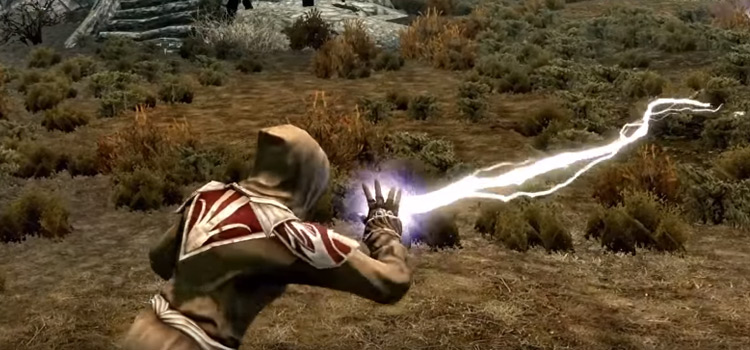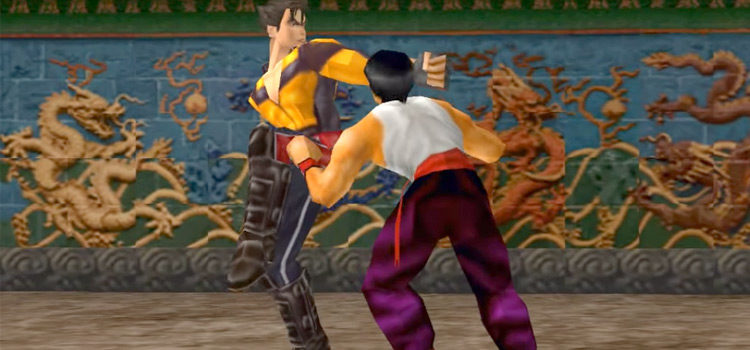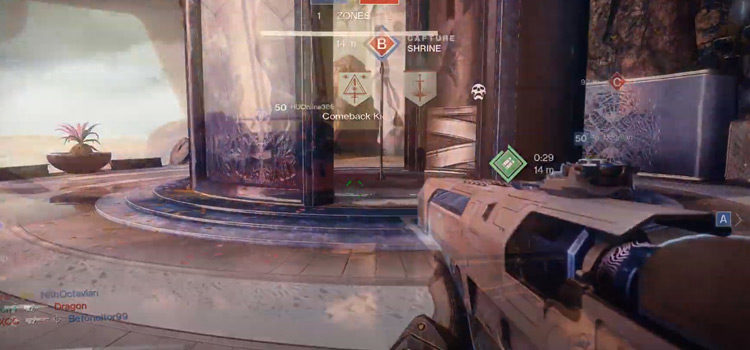D&D 5e Abbreviations Cheat Sheet: The Ultimate Glossary
This post may contain affiliate links. If you buy something we may get a small commission at no extra cost to you. (Learn more).
One of the most intimidating hurdles for a new player can be wrapping your head around the slang your table uses.
This list will cover everything D&D from A-Z and try to shed some light on common abbreviations and nomenclature.
If you’re looking for something specific you can search the page with CTRL+F. Or for phone users, well, it’s in alphabetical order!
1e (or AD&D), 2e, 3e, 3.5e, Pathfinder, 4e, and 5e: The e stand for edition, and roughly put these are the separate editions for D&D. Over time they’ve made significant reworks & updates to the rules to better fit changing preferences. 1e is roughly interchangeable with Advanced edition, as it was the first major departure from Chainmail, the system that birthed D&D. D&D 1e was marketed as Advanced, so that’s probably what you’ll hear the most.
AC: Armor Class, how hard a character/monster is to hit.
AOE: Area of Effect. Generally speaking, there are two types of spells in D&D. Those that affect a specific character(maybe called Direct Spells) and then spells that affect an area. Anything inside this area is affected by the spell, pretty simple.
ASI: Ability Score Increase. At levels 4, 8, 12, 16, and 19 you add +2 to your ability scores (STR, DEX, CON, INT, WIS, CHA), either 2 to 1, so a total of +2 to one stat, or 1 to 2, so +1 to two different stats.
Ability Score Abbreviations: The common abbreviations for your base stats:
STR: Strength (How strong you are)
DEX: Dexterity (How precise and quick you are)
CON: Constitution (How hearty you are; how many hits you can take)
INT: Intelligence (Book smarts; history and magic)
WIS: Wisdom (Street smarts; insight and survival)
CHA: Charisma (Your ability to persuade)
BBEG: Big Bad Evil Guy/Gal, a humorous acronym for the final boss of a campaign. Usually used because the boss is horribly evil and one dimensional. “Look out, the BBEG is using his action to kick that puppy!”
Coins: There are different abbreviations for coins in D&D, all listed below in descending value and marked in relation to gold pieces:
PP (10 GP): Platinum Pieces, the most valuable
GP (1 GP): Gold Pieces, the universal standard, and most commonly dealt with currency
EP (1/2 GP): Electrum Pieces, impure mixture of Gold and Silver, relatively uncommon
SP (1/10 GP): Silver Pieces, usually what you’ll pay for small goods with, rooms in an inn etc.
CP (1/100 GP): Copper Pieces, least valuable coin
CR: Challenge Rating, the difficulty level of a monster. Could also be used to refer to Critical Role, a popular D&D campaign that’s livestreamed every Thursday.
DC: Difficulty Class. This describes how difficult a check is to pass.
Dice (ex: 1d6): The first number (in this case 1) indicates the number of dice you should roll, and the dX indicates the number of sides the dice should have(X in this case is 6). So, 6d12 means you have to roll six twelve-sided dice. The most common variants are d4, d6, d8, d10, d12, and d20. All are included in a standard set of tabletop dice.
DM: Dungeon Master, the player generating the world and controlling the Non-Player Character’s side of interactions.
DMG: Dungeon Master’s Guide, in previous editions this taught you how to DM. but 5e has taken a much looser stance. there’s no wrong way as long as you’re having fun. Now it acts as a reference for items and monsters mostly, with some extra information on possible lore for your campaign.
D&D/DnD: Dungeons and Dragons.
DPR/DPT: Damage per Round and Damage per Turn, respectively. Used mostly in hypotheticals, what your max damage could be given a perfect scenario. Often this turns into an arms race, but is not directly correlated to usefulness.
DPS: Damage Per Second. A gaming term that has immigrated into D&D, means roughly the same thing as DPR/DPT, and is more often used to refer to a character focused solely on damage output (ex: “a DPS Character”).
EXW: Explorers Guide to Wildemount, an expansion book for 5e, usually not referred to by its acronym.
GM: Game Master, the term for DM in most systems outside of D&D.
HP: Hit Points, your maximum life force. Basically how much damage you can take before falling unconscious.
LFG: Looking For Group, usually used on online posts.
LVL: Level
Magical Abbreviations: The different ‘components’ of each spell are often abbreviated, mostly the prerequisites for casting the spell.
V: Vocal component of the spell. You have to make an audible noise, and those who hear it could make an arcana check to determine that it’s magical.
S: Somatic component, this is a little bit more difficult to explain. It’s the pattern you follow when you waive your wand, or the sigil you trace out in the air. A choreographed movement. This is the same as Verbal, where if someone sees it they can make an arcana check to determine it’s magical.
M: Material components. This is different from the last two because there is no action required, but you need to have the material the spells specified to make it work. You can avoid this step if you have a spellcasting focus(an item that you can channel magic through) or a materials pouch (when you buy this it has an endless supply of general magical supplies). This has one exception: if the material has a price beside it, then it cannot be swapped out, and you need that material of at least that value.
Mini: Miniature Model. Essentially they’re small figurines that help players visualize what’s happening in game. Can be used with battle maps, which are grid-based white boards where you can draw surroundings to create a more tactical experience.
MM: Monster Manual, but I don’t know anyone who refers to it as MM. You might see it in writing.
MTF (Mordy’s): Mordenkainen’s Tome of Foes, an expansion book for 5e.
NPC: Non-Player Character. These are characters that are controlled by the DM, everything from barkeeps to beholders, all monsters and people outside your party.
OOC: Out of Character, used to preface a statement/question that is your own, not your character’s. That being said, the abbreviation is much more common in writing than spoken, I’ve never heard someone say “Oh Oh Cee” out loud.
OP: Over Powered, referring to a character or class skill that is just too good.
P-b-P: Play-by-Post, a method of playing through written correspondence. Usually much slower, but much more generous in the time you can play. You don’t have to be able to sit down for four hours a week to play.
PC: Player Character, the characters being controlled by non-DM players.
PHB: Player’s Handbook, the beginner’s book that goes over the rules and character generation for D&D.
PP: Passive Perception, this is your Wisdom + Perception score. And it’s what someone has to succeed against to sneak by you undetected. (Could be Platinum Pieces, check “coins”).
PvDM: Player versus DM, referring primarily to campaigns where the DM is actively trying to kill/inhibit the party, and it’s treated as a challenge to survive.
PvE: Player versus Environment, the most commonly played form of D&D. You and a party collaborate with a DM to solve puzzles and adventure in the created world.
PvP: Player versus Player, most likely referring to the fact that players are allowed to attack and kill other players in that campaign.
RAW: Rules as Written. The literal translation of what the Player’s Handbook says.
RAI: Rules as Intended, most likely what the developers were trying to accomplish when writing the rules, usually accompanies some minor rule bending.
RPG/TTRPG: Role-Playing Game(broader) and Table Top Role Playing Game, respectively. RPGs can be video games or choice based visual novels. Table Top games are pen and paper games like D&D. The obvious difference is the medium, but there’s a host of smaller changes because of the way you interact with the game.
SRD: Systems Reference Document, similar to Rules as Written. An SRD campaign implies that you’ll be playing by the books.
TPK: Total Party Kill. The unfortunate event when all PC’s have been killed. More often than not the term is used to joke/berate the DM for creating too tough of a situation, “you’re looking for a TPK!”
UA: Unearthed Arcana. One of the additions to D&D 5e. Primarily focused on expanding the magic/race choices available.
VGO (Volo’s): Volo’s Guide to Monsters, additional 5e book. Added monsters and detailed combat scenarios.
WotC: Wizards of the Coast, the publishing company behind D&D and Magic the Gathering.
Weapon Abbreviations: See the entry above labeled “Dice” for how to read damage dice. The following abbreviations are for the types of damage. Your weapon will specialize in a type, and enemies can have resistances to these types.
P: Piercing. Usually your Dex based weapons relying on precision and speed rather than force.
B: Bludgeoning. Usually your hard hitting, but less precise weapons. Because of the nature of the damage type, it’s most common with weapons that don’t require a great deal of skill to use.
S: Slashing. A solid middle ground between Bludgeoning and Piercing. Still STR based, but usually requiring greater skill and offering better damage.
XGE (Xan’s): Xanathar’s Guide to Everything. Another of the additional books to 5e. Added new subclasses, feats, and items.
XP/EXP: Experience Points. This is how D&D tracks accomplishments and general power. You gain XP by killing monsters and completing quests. And if you gain enough XP you level up and gain more power.
These are pretty much all the main abbreviations.
But there are still a few other terms that are useful to know that aren’t exactly abbreviations. Good to keep an eye out for these too:
Adventurers League: Term denoting a ‘league’ of sorts, more organized play and usually has a way to connect you to DM’s and other players.
Friendly Neighborhood Game Store: This is a joking way to refer to game stores that carry D&D material, and usually host D&D campaigns or act as a hub for players.
Old School Revival: A session, probably played in AD&D or Pathfinder (one of the older editions) that wants to return to older facets of D&D. That is to say, more purely about dungeon delving and fighting monsters.
If you’re looking for a game, local game stores are a great place to start.
You’ll be pleasantly surprised how many people enjoy this great hobby, and how willing most are to help newcomers share in their enjoyment of the game.
So get out there and have fun!






